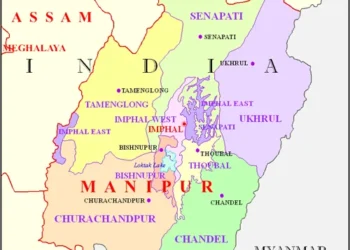President Trump’s bold military move in Iran has fractured his base and ignited national outrage, with critics accusing him of dragging the U.S. into another endless war without Congressional approval.
BY PC Bureau
June 22, 2025 – A wave of outrage has swept across the United States as thousands of citizens took to the streets in major cities to protest President Donald Trump’s decision to launch military strikes on Iranian nuclear facilities. The demonstrations, marked by chants of “Trump Must Go” and “No War in Our Name,” reflect widespread public discontent with the escalation of U.S. involvement in the Middle East, a move many see as a betrayal of Trump’s campaign promises to avoid foreign conflicts.
The Spark: U.S. Strikes on Iran
On June 21, 2025, President Trump announced that U.S. forces, in coordination with Israel, had conducted airstrikes on three key Iranian nuclear sites—Fordow, Natanz, and Isfahan—using B-2 stealth bombers and Massive Ordnance Penetrator bombs. Trump described the operation as a “spectacular military success,” claiming the strikes had “totally obliterated” Iran’s nuclear enrichment capabilities. The decision followed weeks of heightened tensions, with Trump issuing ultimatums to Iran and dismissing diplomatic efforts as “too late.”
The strikes, which marked the first significant U.S. military action against Iran since 1979, have drawn sharp criticism for their lack of congressional approval and the potential for broader regional escalation. Democratic leaders, including Rep. Jim Himes and Sen. Mark Warner, condemned the move as unconstitutional and reckless, while even some Republicans expressed unease over the absence of legislative oversight.
BREAKING NEWS
Massive protests erupt all across the USA as citizens take to the streets in anger , after Trump entered the war between 🇮🇷 🇮🇱 Iran and Israel
Demonstrators chant in one Voice
” TRUMP MUST GO”
Trump’s ratings amongst Republicans has drastically gone down pic.twitter.com/RF90rahUIn— Ravinder Kapur. (@RavinderKapur2) June 22, 2025
Protests Erupt Nationwide
By the afternoon of June 22, protests had erupted in cities including Washington, D.C., New York, Los Angeles, Chicago, and Seattle. Social media posts on X captured the scale of the demonstrations, with crowds gathering outside the White House and in urban centers, waving signs demanding peace and an end to U.S. militarism. Demonstrators expressed fury over what they perceive as Trump’s pivot from his anti-interventionist rhetoric to direct military engagement.
READ: Honeymoon Horror: Meghalaya SIT Arrests Two More from Indore
In Washington, D.C., police reported an increased presence around religious institutions and public spaces, bracing for potential unrest as the protests grew. Videos circulating online showed marchers clogging city streets, their chants echoing through downtown areas. “We voted for peace, not another war!” one protester in New York told local media, reflecting a sentiment shared by many who felt misled by Trump’s campaign pledges.
In Los Angeles, organizers highlighted the human cost of escalation, pointing to the risk of civilian casualties in Iran and potential retaliation against U.S. troops or allies in the region. “This isn’t just about Iran—it’s about dragging us into another endless war,” said a community activist at a rally in Pershing Square. Similar scenes unfolded in Chicago, where students and labor groups joined forces to denounce the strikes as a violation of international law.
Public Sentiment and Political Divide
The protests underscore a deep divide in American public opinion. While some Republican leaders, such as House Speaker Mike Johnson, praised Trump’s decisiveness, others within the MAGA movement, including isolationist voices like Sen. J.D. Vance, expressed reservations about deeper U.S. involvement. Posts on X from accounts critical of the strikes suggested that even Trump’s base is fractured, with some supporters accusing him of abandoning his “America First” principles.
READ: Daughter of Manipur Nganthoi Sharma Returns in Coffin
Critics of the protests, however, argue that the strikes were necessary to prevent Iran from acquiring nuclear weapons. Israeli Prime Minister Benjamin Netanyahu hailed Trump’s decision as a historic blow against Iran’s nuclear ambitions, and some U.S. hawks echoed this sentiment, framing the action as a strategic necessity. Yet, with no public evidence presented to support Trump’s claim that Iran was “weeks away” from a nuclear weapon, skepticism remains high among protesters and analysts alike.
International and Domestic Ramifications
The U.S. strikes have drawn condemnation from nations like China, Russia, and members of the European Union, who called for a return to diplomacy. Iran’s Foreign Minister Abbas Araghchi labeled the attacks a “betrayal of negotiations,” vowing that Iran would respond to protect its sovereignty. This rhetoric has fueled fears of retaliation, with U.S. law enforcement agencies on high alert for potential threats domestically.
At home, the protests have intensified calls for congressional action to curb presidential war powers. Rep. Thomas Massie’s resolution to prevent unauthorized hostilities against Iran has gained traction among anti-war activists, though it faces an uphill battle in a polarized Congress. Meanwhile, organizers of the demonstrations are planning further actions, including a nationwide day of protest scheduled for next week, as they seek to pressure the administration to de-escalate.
As the United States grapples with its role in the escalating Israel-Iran conflict, the anti-Trump protests highlight a broader debate about America’s foreign policy and the limits of executive power. For many demonstrators, the strikes on Iran represent not just a policy misstep but a profound breach of trust. “We’re tired of being lied to,” said a protester in Seattle, holding a sign reading “No More Forever Wars.”
READ: US Travel Advisory for India: Crime Rates Reveal American Hypocrisy
With Iran promising retaliation and the Middle East teetering on the edge of wider conflict, the protests serve as a stark reminder of the domestic stakes in Trump’s gamble. Whether the demonstrations will influence policy remains uncertain, but their scale and intensity signal a growing public demand for peace—and accountability—at a critical moment in U.S. history.













